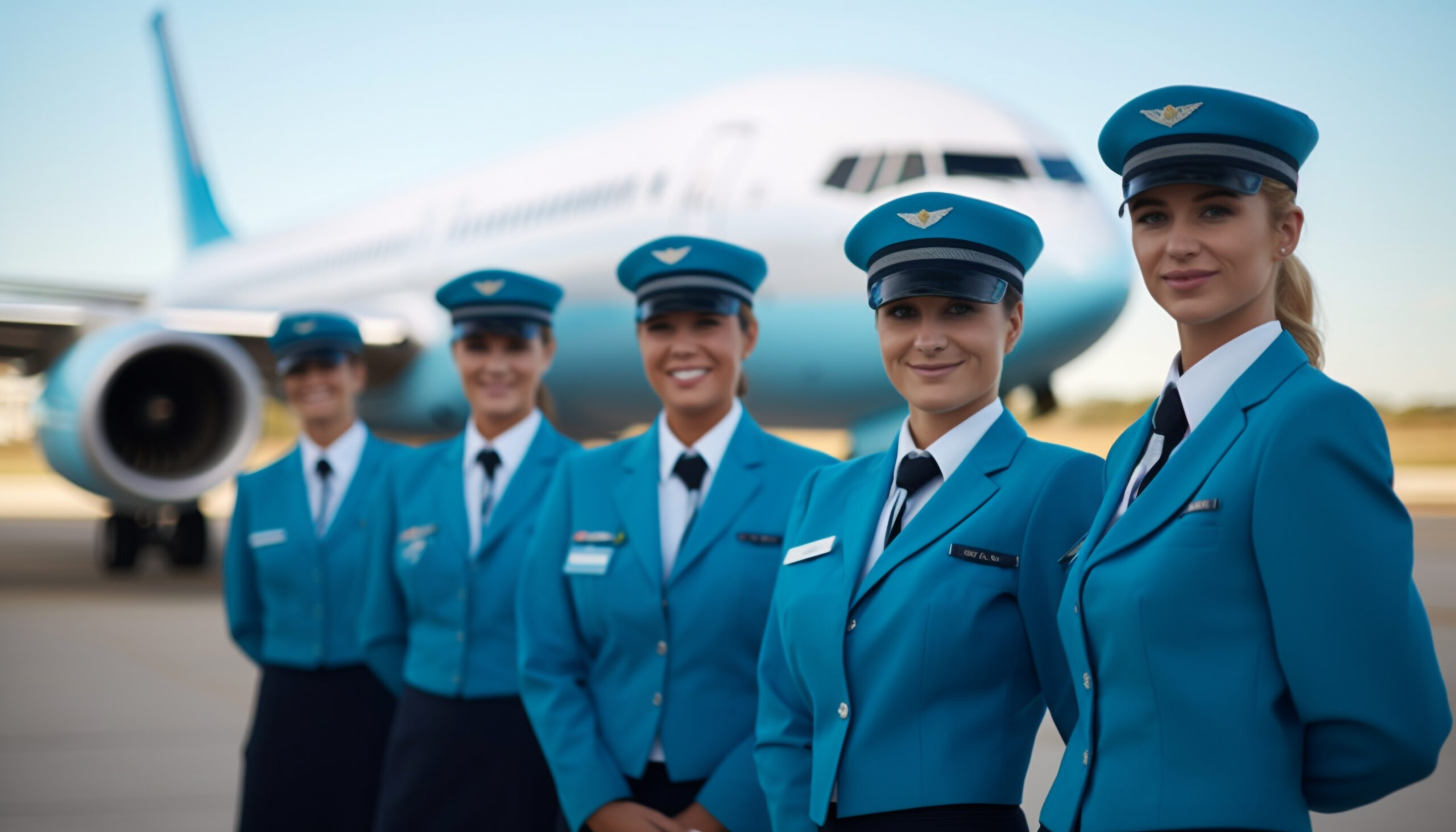
How to become a Cabin Crew
An amazing opportunity to travel the globe while providing top-notch customer service is a job in cabin crew. It necessitates a high level of adaptability, resilience, and interpersonal skills. As a member of the cabin crew, you are responsible for the safety and comfort of the passengers, serving as the airline’s representative and being a key component of the journey.
A career as a cabin crew member, often referred to as a flight attendant or air hostess, doesn’t typically involve giving exams in the traditional academic sense. However, airlines have rigorous selection processes, including assessments and interviews. Here’s what the process generally involves:
1. Application Process: Each airline has its own application process which typically starts with an online application where you submit your CV and a cover letter. Some airlines might ask you to take an online assessment at this stage.
2. Assessment Day: If your application is shortlisted, you may be invited to an Assessment Day, which usually includes group exercises, an English language test, a numeracy test, a reach test, and an interview.
3. Final Interview: If you perform well on the Assessment Day, you may be invited for a final interview. This could be a one-on-one or panel interview with the airline’s recruitment team.
4. Medical Examination: After clearing the interview, you may need to undergo a medical examination as per the airline’s and aviation authority’s standards.
5. Training: Once you pass all these stages, you will be required to undergo a training program before you can start working as a cabin crew member. The training typically covers emergency procedures, safety, first aid, service routines, and the specific aircraft type you’ll be working on.
Eligibility Criteria for a Cabin Crew Career:
1. Age: The minimum age is typically 18 or 21, depending on the airline.
2. Education: You should have a high school diploma or its equivalent, though some airlines prefer candidates with a degree or diploma in hospitality, travel, tourism, or a similar field.
3. Height and Weight: Airlines often have minimum height requirements to ensure you can reach overhead compartments, and there may also be weight restrictions based on height for safety reasons.
4. Medical Fitness: You must be physically fit and may be required to present a medical certificate. Good eyesight is generally a requirement, though glasses and contact lenses are often allowed.
5. Swimming: Many airlines require you to be a competent swimmer, sometimes at least 20-25 meters unaided.
6. Language Skills: Proficiency in English is a must. Knowledge of additional languages can be an asset.
7. Clean Record: A clean criminal record is generally required. For some airlines, a valid passport without restrictions is also necessary.
8. Customer Service Skills: Experience in customer service can be a plus as the job involves a lot of interaction with passengers.
9. Personal Traits: Good personal presentation, communication skills, and a friendly and empathetic disposition are important.
Each airline has its own specific requirements, so it’s recommended to research the specific requirements for each airline you’re interested in.
Training process
Cabin crew members are required to go through a rigorous training process before they start working on flights. This training is provided by the airline once a candidate is selected, and it usually lasts from four to eight weeks, but the exact length can vary depending on the airline.
The training process for flight attendants/cabin crew includes:
1. Safety Procedures and Emergency Situations: This is the most crucial part of the training. Cabin crew members learn how to handle a variety of emergency situations, such as medical emergencies, emergency landings, and evacuations on land or water. They’re trained on how to operate emergency equipment such as evacuation slides, oxygen masks, life jackets, and fire extinguishers.
2. Aircraft Familiarization: Crew members are trained on the specific types of aircraft they’ll be working on. They learn the layout of the aircraft, where emergency equipment is stored, how to operate the aircraft doors, and more.
3. Customer Service: Exceptional customer service is a key part of a cabin crew member’s job. Training includes how to interact with passengers, deal with difficult situations, and provide assistance to those with special needs.
4. In-flight Services: Trainees learn how to conduct in-flight services, including serving meals and beverages, selling duty-free items, and more.
5. First Aid: Cabin crew members are trained to provide first aid and are often the first responders in medical emergencies. They learn how to use the onboard medical equipment and how to handle common in-flight medical issues.
6. Security: Training also covers security procedures, including how to deal with unruly passengers, potential threats, and hijacking situations.
7. Crew Resource Management: This part of the training focuses on teamwork, leadership, decision making, and communication among the crew members.
Once the initial training is complete, cabin crew members receive their certification and can start working on flights. However, they continue to receive regular training throughout their careers to keep their skills up to date and learn about new procedures and equipment. They are also regularly tested on safety and emergency procedures.

